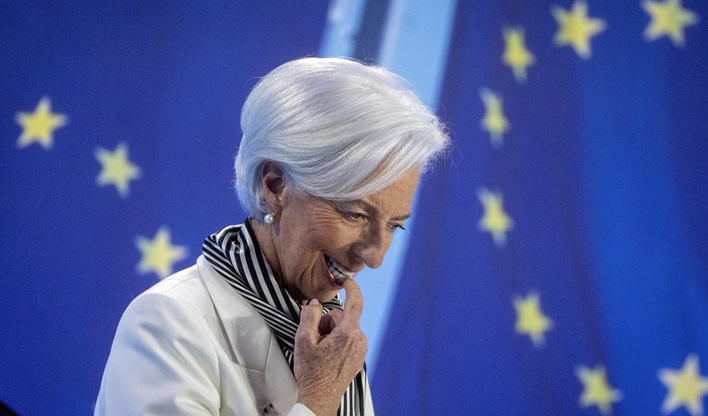Ollie Smith: Now, fixed income is back. We all know that. But under the bonnet of that big story are some interesting little narratives I want to highlight to you. So here to show you more is Morningstar Senior Manager Research Analyst, Evangelia Gkeka. Thanks so much for your time.
Starting with high yield, how has the high yield market performed perhaps compared to other fixed income sectors in 2022 and indeed this year?
Evangelia Gkeka: Hi, Ollie. Yes, thanks a lot. So, in 2022, overall fixed income markets recorded one of the largest selloffs over the last few decades. Central banks aggressively raised interest rates to tackle high inflation and drove yields higher across fixed income sectors, not just high yield, but more specifically, high yield indices recorded sharp losses in 2022, but still outperformed other fixed income categories such as government bonds and investment grade corporates.
The lower duration of the high yield market was the key driver of outperformance. I would say a year-to-date as of end of November, the high yield market has recovered a large portion of the previous year's losses. Moreover, high yield has outperformed other fixed income categories. What helped was better-than-expected economic data, growing hopes for an economic soft landing and resilient corporate earnings and easing inflation. And I would say also what boosted sentiment was attractive yields, low default rates, low refinancing risk and solid equity markets.
OS: Sure. And with that, why do you think we've seen inflows in other fixed income sectors and perhaps not in high yields just yet then?
EG: Sure. I mean, for example, last year, the majority of fixed income categories, including high yield, saw significant net outflows. Investors reduced high yield risk because of recession fears and general economic uncertainty. But for year-to-date as of the end of November, overall fixed income flows have started stabilising. So, they have stabilised. So, it seems that investors decided to return to safer, higher-quality sectors, which is reflected in net inflows within government bond and investment grade bond categories as after the recent hiking cycle, they offer attractive yields. However, within most of high yield categories, we continue to see outflows, but relatively, I would say muted compared to last year. So given the overall economic uncertainty, there seems to be more hesitancy to return to high yield.
OS: Sure. So, in that context, then, how are high yield managers actually positioning themselves?
EG: So, most managers, we recently spoke to have a continuously optimistic outlook. If you see corporate earnings have been resilient, the rate hiking cycle seems to be approaching its end. And the high yield markets offer attractive yields. Now, in terms of the technicals, relatively low levels of new issuance and large volumes of rising stars are limiting supply and provide the tailwind. The managers believe economies will experience a shallow recession, which is likely to only trigger a small increase in default rates. And now if we look at the portfolios in terms of portfolio positioning, most managers had a structural underweight in interest rate duration last year, which was gradually reduced after the selloff. Currently, managers have a duration either in line or slightly above their benchmarks, and they manage duration in a slightly more tactical fashion compared to 2022.
Now in terms of sector allocation, we see a preference for defensive sectors such as utilities, healthcare and services, driven by attractive valuations, stable cash flows, resilient earnings, and their ability to protect in a recessionary environment. I would say it's common to see an underweight in highly cyclical sectors such as autos, industrials, metals and mining due to recession fears. And a lot of managers continue to find opportunities in the subordinated debt of investment-grade rated banks, and increased allocation after the sell-off we saw back in March. And this is driven by high-quality balance sheets and resilient earnings as banks continue to benefit, of course, from the higher rates. And lastly, some managers are also actively using indices for hedging purposes, as their liquid nature makes them an efficient tool for tactical risk management in the current environment.
OS: Sure. So just quickly then, I mean, perhaps the flows haven't happened yet, and the managers are positioning themselves for next year, but are there any specific funds that have outperformed in the environment that you've described?
Gkeka: Sure. I'll give you three examples on the high yield side. So, for example, within the global high yield peer group is AXA Global High Yield Fund, which returned 8.3% for the year-to-date as of the end of November outperforming its peer group by 0.3%. What helped was an overweight allocation to lower-rated, higher-yielding securities in the United States that benefited from an improving outlook in the U.S. economy. Also, positive security selection in travel and leisure, and some of its largest overweight sectors, such as services and technology, did also contribute.
Another example, another fund, another strong performer was Barings Global High Yield Bond, which returned 9.9% over the same period outperforming its global high yield bond peer group by 1.9%. The main drivers of outperformance included credit selection across BB rated credits, technology, basic industry, travel and leisure sectors, and under-allocations to BB credits in the financials sector. The fund also benefited by avoiding exposure to distressed and defaulted credits, such as the French supermarket group, Casino and the U.S. regional sports network operator Diamond Sports.
Lastly, within the euro high yield bond peer group, we can speak about UBS Euro High Yield Fund, which returned 10% outperforming peers by 3.2%. Outperformance was driven mainly by strong security selection, and overweight in cable TV operator performed strongly while not owing this French supermarket group Casino also helped. Selection in healthcare and gaming and overweight allocation to leisure were also additive. And I would say this trend has continued into December so far.
OS: Okay. Thank you very much. To check out the final ratings update from the Morningstar Manager Research Team for 2023, do check out Morningstar.co.uk. And for everything else, including how to position your portfolio in 2024, you can check out any of our editorial websites internationally. Until next time, I've been Ollie Smith for Morningstar.




























